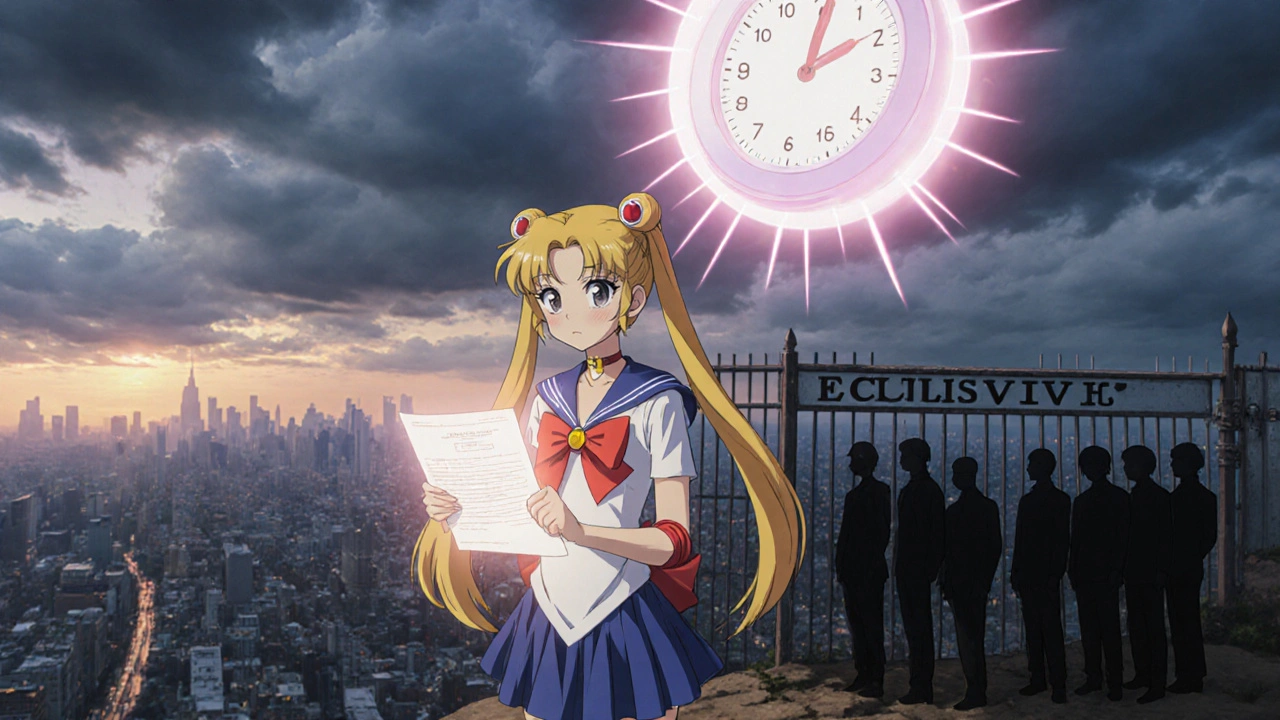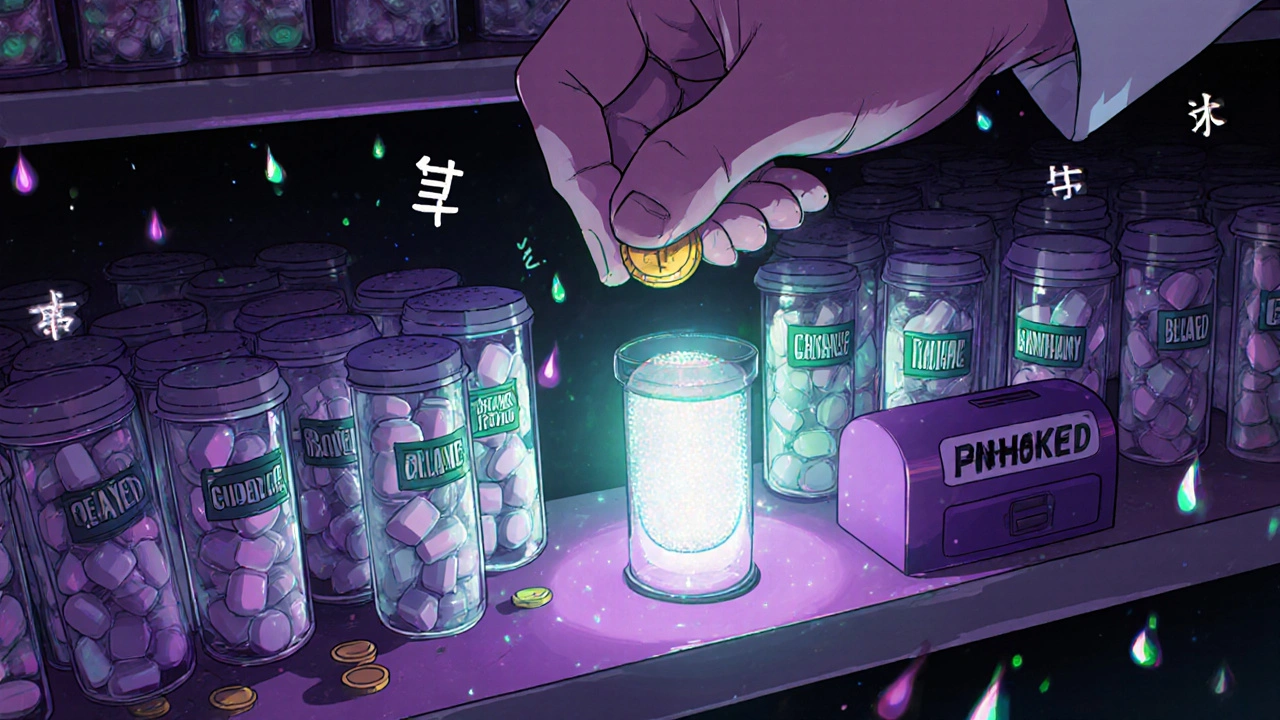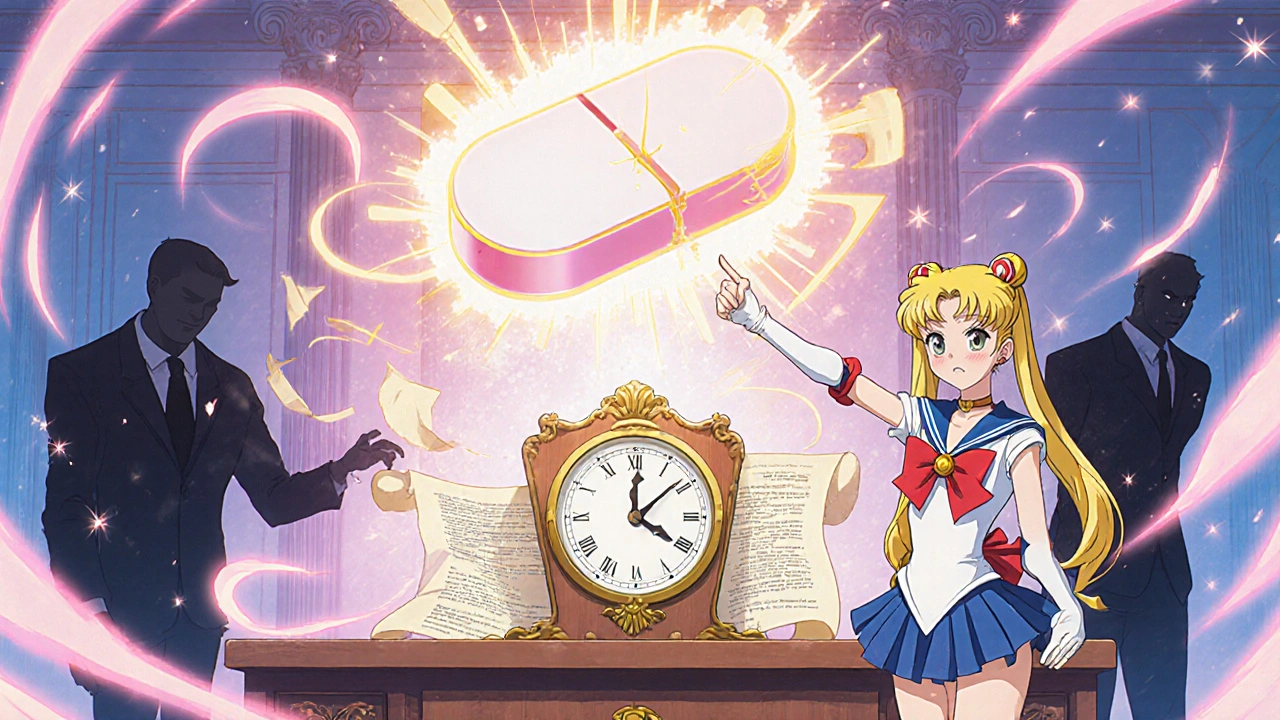When a generic drug company files its application to sell a cheaper version of a brand-name medicine, timing isn’t just important-it’s worth hundreds of millions of dollars. The first company to file an Abbreviated New Drug Application (ANDA) with a Paragraph IV certification gets 180 days of exclusive rights to sell that generic drug. No other generic can enter the market during that time. This isn’t a reward for being first in line-it’s a legal tool designed to shake up drug prices, and it’s had a massive impact on how medicines are priced in the U.S.
How the 180-Day Exclusivity Rule Works
The rule comes from the Hatch-Waxman Act of 1984, a law meant to balance two things: protecting drug makers’ patents and letting cheaper generics hit the market faster. Before this law, it could take years for generics to appear after a brand drug’s patent expired. Companies had to prove safety and effectiveness all over again, even if the drug had been used for decades. Hatch-Waxman changed that by letting generic companies rely on the brand’s existing data-saving time and money. But here’s the catch: to get that 180-day exclusivity, a generic company must file an ANDA and include a Paragraph IV certification. That’s a legal statement saying, “We believe this patent is invalid, unenforceable, or we won’t be infringing it.” It’s a direct challenge to the brand drug’s patent. If the brand company sues, the FDA can delay approval of all generics for up to 30 months while the court case plays out. But if the generic wins-or the patent is found invalid-the clock starts ticking on their 180-day exclusivity. The exclusivity doesn’t start when the FDA approves the drug. It starts when the first filer either begins selling the drug or wins a court decision in their favor-whichever comes first. That’s a crucial detail. It means a company could win a lawsuit in January, sit on the approval, and not launch until June. During that time, no other generic can enter. The clock is already running.Why This Matters for Drug Prices
Generic drugs make up 90% of prescriptions in the U.S., but they cost only about 22% of total drug spending. That’s because of competition. Once multiple generics enter, prices drop fast-often by 80% or more. But if only one company has exclusivity, they’re the only game in town. That means they can charge more, sometimes close to brand prices, for those six months. Studies show that during their 180-day window, first filers capture 70% to 80% of the generic market. Some have made over $1 billion in revenue from a single drug. Teva’s generic version of Copaxone, a multiple sclerosis drug, brought in $1.2 billion during its exclusivity period in 2015. That’s not just profit-it’s a financial lifeline for generic companies that often operate on thin margins. But here’s the problem: sometimes, the first filer never launches. They win the lawsuit, get the exclusivity, and just… wait. Why? Because they made a deal with the brand company. The brand might pay them not to launch, or launch their own “authorized generic” (a version made by the brand but sold under a generic label). This blocks other generics from entering. In fact, since 2010, about 45% of first filers delayed or never launched their product, blocking competition for an average of 27 months beyond the intended 180 days.
The Loophole That Broke the System
The original goal of Hatch-Waxman was to get cheaper drugs to patients faster. But the 180-day rule created a loophole that’s been exploited for decades. If the first filer doesn’t market the drug, the exclusivity still counts as “used.” Other companies can’t file their own ANDAs for the same drug until the 180 days expire-even if they’ve been ready to go for years. This is called the “paper generic” problem. A company files the paperwork, wins the lawsuit, and sits on the approval. The brand drug stays protected, patients pay more, and the system doesn’t work as intended. The FDA has called this a “gaming” of the system. In 2022, then-Commissioner Robert Califf told Congress: “The current 180-day exclusivity system has been manipulated in ways that delay generic competition rather than accelerate it.” The Federal Trade Commission has been fighting this for years. Their 2010 study found that “reverse payment” settlements-where brand companies pay generics to delay entry-cost consumers $3.5 billion annually. These deals often happen behind closed doors. One former brand executive anonymously shared on Reddit that they’d paid first filers up to $50 million to delay launch. That’s cheaper than losing 100% of the market overnight.What’s Being Done to Fix It
The FDA has proposed major changes. Their 2022 legislative proposal says exclusivity should only start when the first filer actually begins selling the drug. That way, if they don’t launch, the clock doesn’t run. Other companies can file their ANDAs and enter the market right away. This would prevent the “paper generic” tactic and get more competition faster. They’ve also expanded the Competitive Generic Therapy (CGT) program, which gives 180-day exclusivity to the first generic to enter a market with little or no competition-even without a patent challenge. Unlike the old rule, CGT exclusivity can’t be triggered by a court decision. It only starts when the drug hits shelves. That’s a smarter design. In 2022-2023 alone, the FDA added 78 new drugs to the CGT list. Analysts estimate that if the new rules pass, 40 to 50 drugs could see generic entry 6 to 9 months sooner each year. That could save consumers $1.2 to $1.8 billion annually. But the brand drug industry isn’t backing down. PhRMA argues that changing the rule could hurt innovation. They say if generics know they can’t count on exclusivity, they won’t risk the $5-10 million it takes to challenge a patent. That’s a fair concern-but the current system is already broken. The cost of delay is far higher than the cost of reform.
Who Can Actually Use This Rule?
Not every generic company can play this game. Filing a Paragraph IV certification isn’t just paperwork. It requires deep legal expertise, patent analysis, and the willingness to go to court. The process takes 18 to 24 months and costs millions. Only the biggest players-Teva, Viatris, Sandoz-have the resources to do it regularly. They account for 65% of all Paragraph IV filings, even though they make up only 35% of the generic market. Smaller companies often can’t afford the risk. The FDA rejects 37% of Paragraph IV filings for technical errors. One regulatory consultant told a drug industry forum that determining who’s truly “first” can come down to the exact second an application is submitted. Multiple companies sometimes file on the same day, leading to legal battles over who qualifies. And even if you win, you’re not guaranteed success. In 2017, Sanofi successfully argued that the first filer of a generic version of insulin glargine had forfeited exclusivity by delaying launch. The result? Another two years of brand monopoly.The Bottom Line
The 180-day exclusivity rule was meant to be a spark for competition. Instead, it’s become a high-stakes poker game. The first filer wins big-if they play their cards right. But too often, the system rewards delay over delivery. Patients pay the price. The fix isn’t to scrap the rule. It’s to make sure exclusivity only kicks in when a drug actually hits the pharmacy shelf. That’s how Hatch-Waxman was supposed to work: faster access, lower prices, real competition. Right now, we’re missing the point. The law needs to catch up with the tactics.Who qualifies for the 180-day exclusivity period?
Only the first company to submit a substantially complete Abbreviated New Drug Application (ANDA) with a Paragraph IV certification-meaning they’re challenging a patent as invalid, unenforceable, or not infringed-is eligible. The FDA determines who is first based on filing timestamps, sometimes down to the second. Multiple companies filing on the same day can lead to legal disputes over who qualifies.
When does the 180-day clock start?
The clock starts on the earlier of two dates: the day the first filer begins commercial marketing of the generic drug, or the day a court rules the patent is invalid, unenforceable, or not infringed. This means exclusivity can begin even before FDA approval is granted, which has led to abuse when companies delay launch after winning a lawsuit.
Can the 180-day exclusivity be lost?
Yes. The FDA can deny or revoke exclusivity if the first filer fails to market the drug within specific timeframes, engages in reverse payment settlements with the brand company, or if their ANDA is found to be incomplete or fraudulent. The Medicare Modernization Act of 2003 added strict forfeiture rules to prevent gaming the system.
What’s the difference between Paragraph IV exclusivity and CGT exclusivity?
Paragraph IV exclusivity is tied to patent challenges and can be triggered by a court decision-even without a product launch. Competitive Generic Therapy (CGT) exclusivity, created in 2017, only starts when the first generic actually begins selling the drug. CGT doesn’t require a patent challenge and is meant for drugs with little or no generic competition, making it harder to game.
Why do brand companies pay generic makers not to launch?
It’s cheaper than losing the entire market overnight. When a generic enters, brand drug prices can drop by 80% or more. If a brand company pays the first filer $50 million to delay launch for 18 months, they avoid losing hundreds of millions in revenue. These deals, called “reverse payments,” are controversial and often investigated by the FTC, but they’ve been common in the industry.
How does this affect patients?
When the first filer delays or never launches, patients pay higher prices for longer. Generic drugs save the U.S. healthcare system over $2 trillion annually. But if competition is blocked-even for months-patients and insurers pay more. The FDA estimates that fixing the exclusivity rule could save consumers $1.2-$1.8 billion per year by speeding up generic access.

Brendan Peterson
November 14, 2025 AT 14:18The 180-day exclusivity rule sounds like a clever incentive, but it’s basically a legal loophole that lets big pharma and big generics collude in plain sight. The FDA’s data shows nearly half of first filers never even launch. That’s not innovation-that’s rent-seeking dressed up as competition.
Jessica M
November 15, 2025 AT 05:04It is imperative to recognize that the Hatch-Waxman Act was designed as a balanced mechanism to foster both innovation and accessibility. The current misuse of Paragraph IV certifications, however, represents a significant deviation from legislative intent. Regulatory reform must prioritize patient access over corporate arbitrage.
Erika Lukacs
November 17, 2025 AT 01:45It’s ironic, isn’t it? The system meant to break monopolies became the monopoly’s best friend. We’re not fighting capitalism here-we’re fighting its corrupted version, where the rules are written by those who benefit most from them.
Rebekah Kryger
November 18, 2025 AT 23:33Let’s be real-this isn’t about patents. It’s about oligopoly theater. The ‘first filer’ is just the frontman for a cartel. Teva doesn’t win because they’re clever-they win because they’ve got the legal army to burn through every patent challenge while the little guys get crushed by compliance costs.
Victoria Short
November 20, 2025 AT 20:37So… the system’s broken. Got it. What do we do now?
Eric Gregorich
November 21, 2025 AT 18:18Think about it-this isn’t just a drug pricing issue, it’s a moral failure wrapped in regulatory jargon. We’ve turned healthcare into a poker game where the stakes are people’s lives, and the players are corporations that have spent decades lobbying to make sure the deck is stacked. The 180-day window? It’s not a reward-it’s a ransom note. And we’re the ones paying it, month after month, prescription after prescription. The FDA’s proposal to tie exclusivity to actual market entry? That’s the bare minimum. We need to dismantle the entire structure that allows reverse payments, that lets a company sit on a drug for two years after winning a lawsuit, that lets a brand company launch its own ‘authorized generic’ to pretend it’s competition. This isn’t capitalism. This is feudalism with a corporate logo.
Koltin Hammer
November 23, 2025 AT 06:17You know what’s wild? This whole system was built on the idea that competition drives prices down. But what we’ve got now is a system where competition is weaponized to delay competition. The first filer isn’t a hero-they’re a gatekeeper. And the brand companies? They’re just paying the gatekeeper to keep the door locked. It’s like paying someone to stand in front of a fire exit so no one else can get out. The FDA’s CGT program is the only thing that’s actually aligned with the original spirit of Hatch-Waxman-rewarding actual market entry, not legal chess moves. If we want real savings, we need to stop rewarding lawsuits and start rewarding pills on shelves.
Phil Best
November 24, 2025 AT 21:41Oh, so the first guy to file gets a six-month monopoly? Cool. So what’s the difference between this and a patent extension? NOTHING. You’re just calling it ‘exclusivity’ now so it sounds less like theft. And the best part? The brand companies pay the first filer to NOT launch. That’s not capitalism-that’s a crime syndicate with a law degree. Someone get the FTC a megaphone.
Parv Trivedi
November 26, 2025 AT 18:08This is a very important issue for global health equity. Many developing countries rely on affordable generics to treat chronic diseases. When the first filer delays launch, it affects not just Americans-it delays access worldwide. The system should be reformed to prioritize patients over profits, not just in the U.S., but as a model for others. Small companies and public health advocates must be given more support to challenge patents fairly.
Willie Randle
November 27, 2025 AT 08:07It’s worth noting that the 180-day exclusivity was never intended to be a financial windfall-it was meant to incentivize patent challenges that would clear the path for broader competition. The fact that it’s now a tool for market manipulation reveals a deeper flaw: our regulatory system rewards litigation over innovation. We need to simplify the filing process, reduce legal barriers for smaller firms, and make exclusivity contingent on actual market entry-not court rulings.
Connor Moizer
November 28, 2025 AT 07:40Let’s cut the BS. This isn’t about patents-it’s about greed. The first filer doesn’t ‘earn’ exclusivity-they gamble with millions and hope the brand company folds. And when they don’t? They get paid to sit on their hands. Meanwhile, diabetics, asthmatics, and cancer patients are stuck paying $500 for a drug that should cost $20. The FDA’s proposal is long overdue. If you don’t launch, you don’t get the prize. Simple. No more games.
kanishetti anusha
November 30, 2025 AT 02:12I’m from India, where generics are lifelines. Seeing how this system works in the U.S. breaks my heart. We don’t have the resources to fight patents, but we also don’t have the luxury of waiting 27 months for a drug to become affordable. This isn’t just a U.S. problem-it’s a global injustice. The FDA’s CGT model is a step forward. Let’s expand it worldwide.
roy bradfield
December 1, 2025 AT 00:02Everything you’ve said is true, but you’re missing the real conspiracy. The FDA, Big Pharma, and the top 3 generic manufacturers-Teva, Sandoz, Viatris-they’re all part of the same network. The ‘first filer’ isn’t even a real company sometimes-it’s a shell created by the brand to block competition. The 180-day rule? A smokescreen. The real goal is to keep prices high while pretending we’re fighting for patients. The FTC doesn’t have the power to stop this because they’re funded by the same lobbyists who wrote the law. This isn’t corruption-it’s institutionalized theft.
Patrick Merk
December 1, 2025 AT 13:11It’s fascinating how a law meant to help people ended up creating a whole new industry of legal gymnastics. I’ve seen similar things in Ireland with generic insulin-where delays cost lives. The fix isn’t complicated: if you don’t sell it, you don’t get the clock. Simple, fair, and patient-first. Why is this so hard to implement?
Liam Dunne
December 2, 2025 AT 08:15The real tragedy? The people who can afford to challenge patents are the same ones who already dominate the market. Smaller companies don’t have the capital to risk $10 million on a lawsuit that might get buried for years. The system isn’t broken-it was designed this way to keep the playing field uneven. The CGT program is the only real hope for change.
Vera Wayne
December 3, 2025 AT 09:24I just want to say-I’m so glad someone finally wrote about this. It’s insane that we’re still letting corporations play games with people’s health. The FDA’s proposal is a start, but we need Congress to act. No more delays. No more loopholes. If you don’t launch, you don’t get the exclusivity. Period.
Rodney Keats
December 4, 2025 AT 06:41Wow. So the government pays companies to not sell cheaper drugs? That’s not policy. That’s a punchline.
Laura-Jade Vaughan
December 5, 2025 AT 09:01This is wild 😳 I had no idea generics were this messed up. The fact that companies get paid to NOT launch?? That’s like paying someone to not open a bakery so your bakery stays open. 🤯 We need to fix this NOW. #GenericRevolution
Jennifer Stephenson
December 5, 2025 AT 17:35Exclusivity should begin at market entry, not court victory. Simple fix.